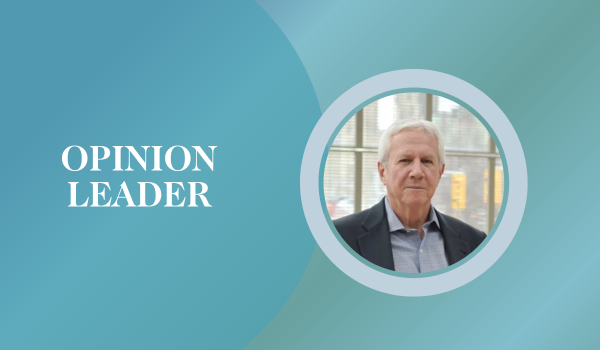State of AI in Canada: improvements needed in commercialization, investment and adoption by businesses
Canada is among the world leaders in artificial intelligence research and talent but lags in commercialization, investment and business adoption of AI, Scale AI’s ALL IN conference heard.
Canadian businesses also aren’t adopting AI as fast as their counterparts in other AI-leading countries, panelists said at a session of Scale AI’s ALL IN conference in Montreal.
Canada’s global ranking in AI slipped a few days after the conference, and there are also signs that the country’s early lead in AI research is waning.
 “The race we’ve been in where we rank amongst the leaders in the world [in AI] has just ended. There’s a new race right now,” said Tony Gaffney (photo at right), president and CEO of the Toronto-based Vector Institute, one of Canada’s three national AI institutes.
“The race we’ve been in where we rank amongst the leaders in the world [in AI] has just ended. There’s a new race right now,” said Tony Gaffney (photo at right), president and CEO of the Toronto-based Vector Institute, one of Canada’s three national AI institutes.
“The challenge for us now is to get into the race with everything that’s required to compete in it,” he said.
Although Canada was one of the first countries to implement a national AI strategy, other countries have since developed strategies with targeted outcomes and a clear view by industry on how AI can improve productivity in each sector, Gaffney said.
These countries’ strategies are built on a solid digital core and data platform, enabled by talent, computing infrastructure and the organized data that AI requires, he noted.
 Julien Billot (photo at left), CEO of Montreal-based Scale AI, a federally funded global innovation cluster, said if Canada wants to have strong local AI ecosystems, the country needs to have robust local demand for Canadian-made AI solutions.
Julien Billot (photo at left), CEO of Montreal-based Scale AI, a federally funded global innovation cluster, said if Canada wants to have strong local AI ecosystems, the country needs to have robust local demand for Canadian-made AI solutions.
“If companies adopt AI, then you have a strong local demand, and that creates a strong AI ecosystem of service and product providers to take Canadian talent to build Canadian IP and export opportunities,” he said.
Scale AI is focused on helping companies build and adopt AI, as well as supporting local demand for Canadian AI products and services, Billot said. Scale AI has funded more than 130 AI products, across multiple industries, that have cumulative value of $600 million, he noted.
 Michael Buhr (photo at right), executive director of C100, said Canada produces amazing talent when it comes to AI, both on the research side and in entrepreneurism.
Michael Buhr (photo at right), executive director of C100, said Canada produces amazing talent when it comes to AI, both on the research side and in entrepreneurism.
However, investment in AI by both the private and public sectors rates only a D-grade, especially compared with multinationals leading in the field, he said.
Microsoft alone invested $15 billion to $19 billion in AI in the last quarter. In comparison, the federal government’s Budget 2024 allocated $2.4 billion over five years for a new AI Compute Access Fund and a Canadian AI Sovereign Compute Strategy.
Buhr, a Canadian who heads C100 in Silicon Valley, brought an international perspective to the panel session. C100 is a network that helps Canadian companies – from early-stage startups to growth firms – build and scale their enterprises.
Buhr pointed out that the lack of investment and commercialization in AI in Canada means the AI talent the country produces is going elsewhere. “They’re getting brain-drained, because all of those entrepreneurs, all those smart people, want to go work with other smart people that are creating products that are going to change the world.”
Canada needs to provide strong incentives and training for companies to understand how they need to adopt AI internally and that the risk around AI can be managed, he said. “I think Canada needs to understand how to take more risks.”
 Cam Linke (photo at right), CEO of Amii (Alberta Machine Intelligence Institute), a national AI institute based in Edmonton, presented a more optimistic view of the state of AI in Canada.
Cam Linke (photo at right), CEO of Amii (Alberta Machine Intelligence Institute), a national AI institute based in Edmonton, presented a more optimistic view of the state of AI in Canada.
OpenAI’s ChatGPT, which Linke described as arguably the most influential technology product in the world right now, was built on top of three core technologies – attention and deep learning; “transformer” architecture; and reinforcement learning via human feedback – that Canadians pioneered, he noted.
“We’re still leading the world in the science of this and leading the world in the creation of talent in the area,” Linke said.
“I think we need to be looking at 10xing that. We should be really seizing this advantage and growing on that as much as possible.”
Canada slipping in AI global rankings
When it comes to commercialization, Linke pointed to Canadian AI companies that are all alumni of Canada’s national AI institutes – Reliant in Montreal, Cohere in Toronto, Arkus AI in Edmonton and Clio in Vancouver. These four companies alone raised $2 billion in investment in the last year, he said.
However, Linke agreed with other panelists that Canadian companies aren’t moving fast enough to invest in AI, hiring enough of the talent produced in Canada, or stepping up to be first customers of Canadian AI solutions.
For example, he said, Edmonton-based Samdesk just landed its first Canadian customer last year, even though the company has been in operation for 10 years, and its AI-powered products for monitoring disruptive events worldwide are used by major firms around the world.
 Elissa Strome (photo at left), executive director of the Pan-Canadian Intelligence Strategy at CIFAR, which leads the national strategy, pointed out that Canada ranked No. 5 on the Global AI Index (as of the time of Scale AI’s conference). Canada had previously ranked No. 4, but slipped a spot due to lack of investment in AI infrastructure.
Elissa Strome (photo at left), executive director of the Pan-Canadian Intelligence Strategy at CIFAR, which leads the national strategy, pointed out that Canada ranked No. 5 on the Global AI Index (as of the time of Scale AI’s conference). Canada had previously ranked No. 4, but slipped a spot due to lack of investment in AI infrastructure.
The federal government’s $2-billion commitment in Budget 2024 will help address the AI infrastructure problem, but those investments need to be implemented effectively “to support the whole AI ecosystem and to look towards the future, to maintain our competitive advantage,” Strome said.
In a sign of Canada’s slippage in AI internationally, the new Global AI Index, released on September 19, a few days after Scale AI’s conference, ranks Canada No. 8 – down three spots compared with the previous index.
Strome, in an email to Research Money, pointed out that only a few points on the Global AI Index’s overall score separate those countries in positions 5th through 8th.
“I think this year’s ranking reflects how increasingly competitive AI is internationally,” she said. “Canada needs to maintain and grow its investments and policies in this space, and deliver on commitments made in Budget 2024.”
What about Canada’s much-vaunted global lead in AI research?
That lead and Canada’s pioneering strengths in AI research are waning, according to a report in March this year by MacroPolo, a branch of the Chicago-based Paulson Institute think tank.
MacroPolo’s Global AI Talent Tracker 2.0 report pointed out that Canada had 10 percent of the world’s “most elite” AI researchers in 2019. In 2022, Canada’s share of these researchers dropped to just three percent.
When it comes to leading countries of origin of the most elite AI researchers (approximately the world’s top two percent), Canada had five percent of these elite AI researchers in 2019. In 2022, Canada’s share of these elite AI researchers fell to two per cent.
[For more on MacroPolo’s report, see item under “Reports & Policies” in Research Money’s March 27, 2024 Short Report].
 Valérie Pisano (photo at right), president and CEO of Mila – Quebec AI Institute, said the question now for Canada is how to pivot to the next version of a national AI strategy, including pivoting from thinking nationally to being part of a nexus of international collaborations in AI.
Valérie Pisano (photo at right), president and CEO of Mila – Quebec AI Institute, said the question now for Canada is how to pivot to the next version of a national AI strategy, including pivoting from thinking nationally to being part of a nexus of international collaborations in AI.
Asking how can we catch up to other countries isn’t the right question or mindset for Canada, she said. “We need to figure out which countries we want to work with, how do we create a next level of collaboration.”
Canada won’t be able to compete on investment in AI with much larger countries like the U.S. and China, Pisano said. “We won’t be able to do it all. Where can we be distinctive and make a difference?”
Invest in data and infrastructure, but also in people
Billot said most companies – even bigger firms – don’t have the in-house expertise to implement AI internally, and so Scale AI typically recommends they work with external third-party AI providers to develop AI solutions.
Linke from Amii said the biggest challenge in trying to get AI and machine learning technologies into companies is not about trying to get specific algorithms into certain firms.
“It’s a talent-transfer game, it’s not a technology transfer game,” he said. “It’s getting the person who knows how to use algorithms into companies and solving problems.”
Canada also needs to work on harvesting and organizing data to take full advantage of AI, said Gaffney from the Vector Institute. “AI is only as good as the data made available to it.”
Data is crucial to advancing researchers’ work and for startups to differentiate themselves from competitors, he said.
“The world looks at Canada with envy, in terms of the national datasets that we have,” he added. For example, Canada has one of the richest, most diverse and trusted health care datasets in the world, driving everything from clinical testing to new pharma products.
“Nationally, it [data] is a key asset. We’re addressing compute, we [also] have to address data,” Gaffney said.
AI provides a great opportunity to address Canada’s poor productivity performance, but only if companies and other organizations take the steps needed to take full advantage of AI, he said.
Adopting AI is similar to when companies shifted from analogue to digital technologies, Gaffney added. “The challenge wasn’t actually the technology, it was organizations being able to set up for success, to absorb and take advantage of it.”
Canada’s national AI institutes are engaged in their respective regions with small to large organizations to help with sourcing talent and making sure this talent stays current, and helping organizations harvest their data, understand AI and how to apply it, he said.
However, Canadian businesses and other organizations also need a change of mindset, Gaffney noted. “We tend to be slow adopters with new technology. But this is a moment where we can’t be.”
[See item: “Many Canadian businesses don’t know they’re using AI tools, even though 86 percent of large SMEs have adopted AI,” under “Reports & Policies” in the September 18, 2024 Short Report].
Pisano from Mila said in most cases, the gains in productivity through AI will come from the interaction between AI and the people who use it. There isn’t enough conversation about how humans and AI can be complementary, and how this can be achieved, she said.
“There’s real hard work, grind work, that needs to be done by leaders, teams and organizations, for this to actually [succeed],” Pisano said.
Company board members and other leaders need to make time to educate themselves about AI, she added. “We’re the generation that was born into a world where AI wasn’t even a word yet. And we’re going to die in a world where AI is going to intersect with every single sphere of our lives.”
As for where the federal government’s $2-billion investment in AI services and infrastructure should be spent, Strome from CIFAR said Canada is starting from a deficit.
“We have been underinvesting in computer infrastructure in Canada, sadly for decades, both in research and for innovation, [in] entrepreneurship and commercialization,” she said.
“So we have to invest that [money] really smartly, and we have to leverage the great strengths that we already have, the resources we already have, and the opportunities for partnership.”
People are Canada’s greatest strength, so we need to ensure we’re investing in research and talent, Strome said. “We need to make sure, as the foundation of our ecosystem, that they have the computing infrastructure they need to be competitive and to do that really advanced research and innovation they’re hoping to do.”
Investment and other resources, including the knowledge and skills to use technology such as high-performance compute, should be focused on a small, dense, rich cluster of AI startup companies with very high potential to scale, Strome said.
The $2-billion federal investment “has got to be [in] infrastructure, but it’s also an investment in people and skills and adoption of advanced computing infrastructure in the public sector, in research, in innovation, and also for the private sector as well.”
Addressing AI risks and capitalizing on Canada’s strengths
Along with the potential benefits of AI, many people – including some of Canada’s pioneers in AI and machine learning – are worried about the risks of fast-developing AI technologies.
These risks range from misinformation, deepfakes and whether we can trust information provided by AI, to the worry that artificial general intelligence which significantly outperforms humans could present an existential risk to humanity's existence.
Strome said it’s crucial to understand AI’s impact on people and society, and our ability to manage and control AI technologies. “It’s important we have deep investments right now in understanding AI safety, both at the short term and at the long term.”
The panelists were asked where they hoped to see Canada’s state-of-AI in a couple of years.
“We’ve got to focus and pick out spots where we’re going to win, such as life sciences, our banking industry and AI trust and safety,” Gaffney said.
Linke said Canada has core industries in biotech, agtech, health and energy that have enormous export markets around the world. He said in two years, he’d like to see Canada’s AI companies “have real customers here, and we have the expertise to solve problems here.”
Strome said she wants to make sure that research and talent stays at the heart of Canada’s AI ecosystem, “that we continue to understand how those investments and that strength really deliver all of the downstream benefits and opportunities we see in AI in Canada.”
She said she also would like to see “really strong and profound examples” of AI deployed to deliver societal benefits in, for example, health care, education and transportation.
Pisano said she hopes to see Canada become part of a greater coalition, partnering with countries on strategic, value-added AI initiatives and projects. She also hopes countries will legislate AI development “and create the kinds of safeguards that will be necessary for us to really reap the benefits of this.”
Said Pisano: “For this to really translate into all the potential that we see today, we also need to make sure that we’re doing it the right way.”
R$
| Organizations: | |
| People: | |
| Topics: |
Events For Leaders in
Science, Tech, Innovation, and Policy
Discuss and learn from those in the know at our virtual and in-person events.
See Upcoming Events
You have 0 free articles remaining.
Don't miss out - start your free trial today.
Start your FREE trial Already a member? Log in
By using this website, you agree to our use of cookies. We use cookies to provide you with a great experience and to help our website run effectively in accordance with our Privacy Policy and Terms of Service.





